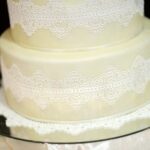Red velvet cake is a classic dessert that never fails to impress with its rich flavor and striking appearance. But what truly sets this cake apart is the art of decoration that can elevate it from delicious to absolutely stunning.
Whether you’re a seasoned baker or a novice in the kitchen, mastering the art of decorating a red velvet cake is an achievement worth pursuing. In this article, we will delve into the world of red velvet cake decoration, unveiling tips, techniques, and inspiration that will help you create mouthwatering masterpieces that are as beautiful as they are delicious.
The history of red velvet cake is one filled with mystery and intrigue, making it all the more fascinating to explore. We will uncover its origins and significance, shedding light on how this timeless dessert became a favorite among bakers and enthusiasts around the world. Understanding its history will not only deepen your appreciation for red velvet cake but also provide insight into how certain decorating styles came to be associated with this iconic confection.
Of course, before we embark on our journey to create breathtaking red velvet cake decorations, we must first ensure that we have the essential ingredients at hand. From classic elements like cocoa powder and buttermilk to unique twists such as adding espresso or cream cheese filling, we will explore various ingredient options that can enhance the flavor and texture of your red velvet cake.
With these foundational elements in place, you’ll be well on your way to creating a perfect base upon which you can unleash your creativity.
History of Red Velvet Cake
The history of Red Velvet Cake is a fascinating story that unveils the origins and significance of this classic dessert. Dating back to the 19th century, the exact origin of Red Velvet Cake is disputed, but many food historians believe that it originated in the southern United States.
One popular theory suggests that Red Velvet Cake was first created in the kitchens of the famous Waldorf-Astoria Hotel in New York City. According to this theory, a woman named Mrs. John D. Rockefeller Jr. requested a red-colored cake during her stay at the hotel, and thus the iconic Red Velvet Cake was born.
Another theory suggests that Red Velvet Cake has its roots in traditional European cakes made with beetroot for natural coloring and moisture. As beetroot became less common in America, bakers started using red food coloring instead.
Regardless of its precise origins, Red Velvet Cake gained widespread popularity during World War II when food rationing led bakers to experiment with alternative ingredients like vinegar and buttermilk, which gave the cake its distinctive tangy flavor and moist texture.
Today, Red Velvet Cake has become an iconic dessert often associated with special occasions such as weddings and holidays. Its vibrant red color symbolizes love and celebration, making it a favorite choice for romantic events like Valentine’s Day.
Key Points
- The true origin of Red Velvet Cake is debated among food historians, but many believe it originated in the southern United States.
- One theory suggests it was created at the Waldorf-Astoria Hotel in New York City.
- Another theory connects its roots to traditional European cakes made with beetroot.
- Red Velvet Cake gained popularity during World War II when alternative ingredients were used due to rationing.
- Today, Red Velvet Cake is beloved for its tangy flavor and vibrant red color symbolizing love and celebration.
Essential Ingredients for a Perfect Red Velvet Cake
Red Velvet Cake has become a beloved dessert for many, known for its rich flavor and velvety texture. To achieve the perfect Red Velvet Cake, it is important to use the right ingredients. In this section, we will explore the essential ingredients that make up a perfect Red Velvet Cake, from classic elements to unique twists.
One of the key ingredients in a Red Velvet Cake is cocoa powder. Although Red Velvet Cakes are not overly chocolatey like regular chocolate cakes, cocoa powder adds a subtle hint of chocolate flavor and also helps to give the cake its distinct red color. It is recommended to use unsweetened cocoa powder for a more authentic taste.
Another essential ingredient in a Red Velvet Cake is buttermilk. Buttermilk helps to keep the cake moist and tender. It also reacts with the baking soda in the recipe to create a light and fluffy texture. If you don’t have buttermilk on hand, you can easily make a substitute by adding lemon juice or vinegar to regular milk.
A traditional Red Velvet Cake recipe calls for red food coloring to achieve its signature vibrant hue. However, some modern variations use natural red colorings such as beetroot powder or red vegetable juices. These alternatives not only provide a natural color but also add nutritional benefits to the cake.
In addition to these classic ingredients, there are also several unique twists that can be added to enhance the flavor of your Red Velvet Cake. Some bakers like to add a hint of coffee or espresso powder for an extra depth of flavor. Others may choose to incorporate different extracts such as vanilla bean paste or almond extract.
| Ingredient | Function |
|---|---|
| Cocoa Powder | Adds subtle chocolate flavor and gives cake its red color |
| Buttermilk | Keeps cake moist and tender, creates light and fluffy texture |
| Red Food Coloring (or alternatives) | Adds vibrant red color to the cake |
| Additional Flavorings (optional) | Enhances flavor with hints of coffee, vanilla, or almond |
By using these essential ingredients and experimenting with unique twists, you can create a Red Velvet Cake that is truly unforgettable. In the next section, we will delve into the step-by-step recipe for mastering the perfect Red Velvet Cake base.
Step-by-Step Recipe
Red velvet cake is a beloved dessert that has stood the test of time. The rich, velvety texture and vibrant color make it a showstopper at any occasion. In this section, we will walk you through a step-by-step recipe to help you master the perfect red velvet cake base.
To begin, gather all the necessary ingredients for the cake batter. This includes all-purpose flour, unsweetened cocoa powder, baking soda, salt, unsalted butter, granulated sugar, eggs, buttermilk, vanilla extract, distilled white vinegar, and red food coloring.
Firstly, preheat your oven to 350°F (180°C) and prepare your cake pans by greasing them and lining with parchment paper. In a medium-sized bowl, whisk together the flour, cocoa powder, baking soda, and salt until well combined. Set this dry ingredient mixture aside.
Next, cream together the butter and sugar in a separate large mixing bowl until light and fluffy. Add in the eggs one at a time, beating well after each addition. Then add in the buttermilk and vanilla extract and mix until incorporated.
Now it’s time to add some vibrant color to your cake batter. Mix in the red food coloring until you achieve your desired shade of red velvet. Be sure to use gel or paste food coloring for more intense color results.
Gradually add the dry ingredient mixture into the wet ingredients while alternating with batches of distilled white vinegar. Begin and end with the dry ingredients. Mix everything together until just combined; avoid overmixing as this can result in a dense cake.
Divide the batter evenly between your prepared cake pans and smooth out the tops using an offset spatula or the back of a spoon. Bake in the preheated oven for approximately 25-30 minutes or until a toothpick inserted into the center comes out clean.
Once baked, allow your cakes to cool in their pans for about 10 minutes before transferring them to a wire rack to cool completely. Once cooled, you can frost and decorate your red velvet cake according to your personal preference.
By following this step-by-step recipe, you can confidently create a moist and delicious red velvet cake base that will serve as the perfect canvas for your creative decorations. Whether it’s for a special occasion or just a weekend treat, mastering the art of making red velvet cake will surely impress your family and friends.
Choosing the Ideal Frosting
When it comes to decorating a red velvet cake, one of the most important decisions you’ll make is choosing the ideal frosting. The right frosting can enhance the unique flavor of the cake and elevate its overall appearance. In this section, we will explore various frosting options that complement the red velvet cake’s distinct taste.
Cream Cheese Frosting: A Classic Choice
One of the most popular frostings for red velvet cake is cream cheese frosting. This creamy and tangy frosting pairs perfectly with the rich and velvety flavor of the cake. Made with cream cheese, butter, powdered sugar, and vanilla extract, this classic choice adds a delightful sweetness and tanginess to every bite. To achieve a smooth texture for your cream cheese frosting, be sure to soften your cream cheese and butter before mixing them together.
Buttercream Frosting: A Sweet and Versatile Option
If you prefer a sweeter frosting option for your red velvet cake, buttercream is an excellent choice. Buttercream frosting is made from butter, powdered sugar, milk or cream, and vanilla extract. It has a smooth and light texture that complements the tender crumb of the cake. Buttercream can be flavored in various ways by adding extracts such as almond or lemon for additional depth of flavor.
Whipped Cream Frosting: Light and Fluffy
For those who prefer a lighter option, whipped cream frosting is a great alternative. Made from heavy cream, powdered sugar, and vanilla extract, whipped cream frosting is airy and melt-in-your-mouth delicious. It adds a delicate touch to red velvet cake without overpowering its flavors. Whipped cream frostings are perfect for those who enjoy a subtler sweetness in their desserts.
Other Frosting Options
While these three frostings are among the most popular choices for red velvet cakes, there are numerous other options to consider. From ganache to chocolate cream, from caramel to fruit-flavored frostings, the possibilities are endless. Don’t be afraid to experiment and find the frosting that best suits your preferences.
Choosing the ideal frosting for your red velvet cake is an essential step in creating a stunning and delicious dessert. Whether you prefer the classic cream cheese frosting, a sweet buttercream, or a light whipped cream option, each choice brings its own unique qualities to enhance the flavor profile of the cake. So why wait? Let’s move on to the next section and delve into the exciting world of red velvet cake decorations.
Red Velvet Cake Decoration Ideas
When it comes to decorating a red velvet cake, the possibilities are endless. From classic piping techniques to modern and creative designs, you can truly showcase your creativity and turn a simple cake into a stunning masterpiece. Whether you’re a beginner or an experienced baker, there are various ways you can decorate your red velvet cake that will impress both visually and taste-wise.
Traditional Piping Techniques:
One of the most common and traditional ways to decorate a red velvet cake is through piping. The classic technique involves using a piping bag fitted with different nozzles to create beautiful patterns on the cake’s surface. From rosettes and flowers to shells and stars, the options are abundant. You can use buttercream frosting in various colors that complement the vibrant red color of the cake, or stick with cream cheese frosting for a more traditional approach.
Modern Creative Designs:
If you want to take your red velvet cake decoration to the next level, consider exploring modern creative designs. Fondant is a popular choice for creating sleek and clean designs on cakes. You can cover the entire cake with fondant for a smooth finish and then add intricate details such as edible flowers or delicate lace patterns.
Another option is using stencils to create unique designs on top of your frosted cake. Simply lay the stencil over the cake surface and dust it with powdered sugar or cocoa powder for an elegant effect.
Incorporating Edible Garnishes:
To elevate the visual appeal of your red velvet cake, consider adding edible garnishes as finishing touches. Some ideas include fresh berries like raspberries or strawberries, which not only add vibrant colors but also complement the rich flavor of the cake. Edible flowers such as pansies or violets can also make for stunning decorations. Don’t be afraid to get creative by incorporating other toppings like chocolate shavings, crushed nuts, or even gold leaf for an extra touch of luxury.
By exploring traditional piping techniques, modern creative designs, and incorporating edible garnishes, you can create a red velvet cake that not only tastes delicious but also looks visually appealing. Let your imagination run wild and embrace your inner cake artist to turn your red velvet cake into a breathtaking centerpiece that will impress everyone who sees it.
Edible Garnishes
When it comes to decorating a red velvet cake, edible garnishes can be the perfect finishing touch. Not only do they add visual appeal but they also enhance the flavors of the cake. Whether you prefer a classic decoration or want to experiment with new and unique toppings, there are plenty of options to choose from.
One popular choice for edible garnishes is fresh fruit. The bright colors and natural sweetness of fruits such as strawberries, raspberries, and blueberries can complement the rich flavor of a red velvet cake beautifully. You can arrange sliced fruit on top of the frosting or create decorative patterns with different fruits. For an added twist, consider macerating the fruit beforehand by lightly coating it in sugar and letting it sit for a short while to release its juices.
Another delectable option for garnishing a red velvet cake is chocolate. From chocolate shavings to curls, adding chocolate accents can bring an extra layer of indulgence to your dessert. You can create chocolate shavings by using a vegetable peeler on a block of semi-sweet or dark chocolate, or use a microplane grater for finer chocolate curls. Sprinkle them on top of your cake or around the edges for an elegant touch.
Lastly, don’t forget about nuts as edible garnishes for your red velvet cake. Chopped pecans or walnuts can provide a nice crunch and nutty flavor that complements the soft texture of the cake. You can sprinkle them on top or press them onto the sides of your frosted cake for added texture and visual interest.
Advanced Decorative Techniques
Once you have mastered the basics of decorating a red velvet cake, it’s time to take your skills to the next level and explore advanced decorative techniques. These techniques will allow you to unleash your creativity and create truly show-stopping designs that will leave everyone impressed. Two popular methods for advanced cake decoration include working with fondant and using stencils.
Fondant is a versatile icing that can be rolled out into a smooth sheet, then draped over the cake for a flawless finish. It provides a sleek and polished look that is perfect for more formal occasions or elegant celebrations. To work with fondant, start by covering your cake in a thin layer of buttercream frosting to help the fondant adhere.
Lightly dust your work surface with powdered sugar or cornstarch to prevent sticking, then roll out the fondant to the desired thickness. Carefully drape the fondant over the cake, smoothing it gently from the top down and making sure there are no air bubbles trapped underneath. Trim any excess fondant from the bottom of the cake using a sharp knife or pizza cutter for a clean edge.
Stencils are another fantastic way to add intricate designs and patterns to your red velvet cake. They come in various shapes and sizes, allowing you to get creative with your decorations. To use stencils, start by securing them firmly against the sides or top of your cake using toothpicks or small strips of tape.
Once they are secure, use an offset spatula or food-safe brush to apply colored icing over the stencil. Carefully lift off the stencil once you have achieved the desired coverage, revealing a beautifully detailed design on your cake.
In addition to fondant and stencils, don’t be afraid to experiment with other advanced decorative techniques such as piping intricate patterns or creating 3D designs with chocolate or sugar. These techniques may require a bit more practice and patience but can result in truly stunning cake decorations.
Remember, the key to success with advanced techniques is to start small and build your skills over time. With dedication and practice, you will soon be able to create elaborate and personalized red velvet cake decorations that are sure to impress.
Red Velvet Cake Presentation
When it comes to showcasing your beautifully decorated red velvet cake, presentation is key. Whether you are serving it at a special occasion or simply indulging in a slice at home, displaying your cake as a stunning centerpiece adds an extra touch of elegance and allure. In this section, we will explore some tips and tricks to help you present your red velvet cake in a way that is sure to impress.
One effective way to display your red velvet cake is by using a cake stand. A cake stand not only elevates the cake, giving it prominence on the table, but it also adds a touch of sophistication to the overall presentation.
You can choose from various styles and materials such as glass, porcelain, or metal, depending on the theme or aesthetic you desire. Consider selecting a cake stand that complements the colors and design of your red velvet cake for a harmonious display.
Another aspect to consider when presenting your red velvet cake is the use of decorative elements around the base of the cake. Fresh flowers are an excellent choice for adding beauty and color to the display. Choose flowers that complement the color palette of your red velvet cake or go for contrasting hues to create visual interest. Ensure that any flowers you use are safe for consumption and have been thoroughly washed before placing them near the cake.
To add an extra touch of elegance, consider using edible decorations that match the flavors or theme of your red velvet cake. For example, if you have incorporated citrus flavors into your recipe, candied lemon or orange slices can be placed strategically around the edges of the plate. Alternatively, if you have added shredded coconut to your frosting or filling, sprinkle some over the base of the displayed cake for added texture and flavor.
By paying attention to these tips and tricks for displaying your red velvet cake as a stunning centerpiece, you are sure to wow both yourself and your guests. Remember to consider the overall color scheme, select a complimentary cake stand, and add decorative elements that enhance the flavors and design of your creation.
With careful presentation, your red velvet cake will take center stage as a work of art that is as pleasing to the eyes as it is to the taste buds.
Conclusion
In conclusion, decorating a red velvet cake is not just about adding the final touches to a delicious dessert; it is an opportunity to unleash your creativity and embrace your inner cake artist. Whether you choose to stick with traditional piping techniques or experiment with modern creative designs, there are endless possibilities for turning a simple red velvet cake into a visually stunning masterpiece.
Throughout this article, we have explored the history and significance of red velvet cake, discussed the essential ingredients for its perfect base, and provided step-by-step instructions for baking the cake itself. We have also delved into various frosting options that complement its unique flavor and explored different decoration ideas that range from traditional to more avant-garde.
From edible garnishes that elevate the visual appeal of the cake to advanced decorative techniques like fondant and stencils, we have covered all aspects of creating breathtaking red velvet cake decorations. Additionally, we have shared tips and tricks on how to present your cake as a stunning centerpiece, ensuring that it becomes the highlight of any occasion.
So, whether you are baking for a special celebration or simply want to indulge in some creative relaxation, don’t hesitate to explore the art of red velvet cake decoration. Embrace your inner cake artist and let your imagination run wild.
With some practice and experimentation, you will be amazed at the beautiful creations you can bring to life. So go ahead – grab your piping bag or fondant tools and get ready to create memorable and breathtaking red velvet cake decorations like never before.
Frequently Asked Questions
How can I decorate a red velvet cake?
Red velvet cake can be decorated in numerous ways to enhance its appeal. One popular option is to frost the cake with cream cheese frosting, which pairs wonderfully with the rich flavor of the cake. You can also opt for traditional buttercream frosting or a whipped cream frosting if you prefer a lighter texture.
Aside from the frosting, you can add decorative touches such as sprinkles, chocolate shavings, or even fresh berries to further elevate the cake’s appearance. Edible flowers or edible gold leaf can also be used to create an elegant and sophisticated look.
Is red velvet just colored chocolate cake?
While red velvet cake does contain cocoa powder like chocolate cake, it is not simply a colored version of chocolate cake. The unique flavor and texture of red velvet cake sets it apart from typical chocolate cakes. Red velvet has a subtle tanginess that comes from the addition of buttermilk and vinegar in the batter, which enhances the overall taste experience.
It has a hint of cocoa flavor, but it is much milder compared to a full-on chocolate cake. Additionally, red velvet cakes often have a uniquely moist and tender crumb that contributes to their distinctiveness.
Is red velvet cake just cake with food coloring?
Red velvet cake is more than just regular cake with food coloring added to it. While food coloring does provide its signature vibrant red hue, there are other key ingredients and techniques involved in making red velvet cake. As mentioned earlier, red velvet incorporates buttermilk and vinegar into the batter, which contribute to its unique flavor profile and moist texture.
Additionally, many recipes call for using both baking soda and baking powder to help leaven the cake properly. The combination of these ingredients gives red velvet its characteristic taste and texture that differentiate it from simple colored cakes. So while food coloring plays a role in achieving the iconic red color, there’s much more going on behind the scenes in creating an authentic red velvet cake experience.

Welcome to my blog about home and family. This blog is a place where I will share my thoughts, ideas, and experiences related to these important topics. I am a stay-at-home mom with two young children. I hope you enjoy reading it! and may find some helpful tips and ideas that will make your home and family life even better!





